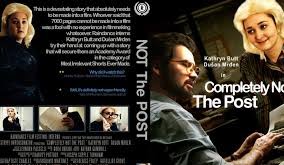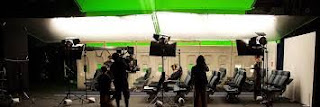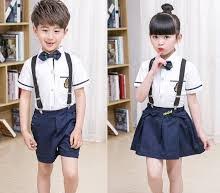Powered by:Richstars entertainment productions
*The protagonist's journey leaving home or arriving
somewhere new.
*Every story should have love and tragedy.
*The hero's journey to self-discovering and acceptance.
*A beginning, middle and an end.
Part Three of Five: Thinking Visually Edit
STEP: 1
 Develop an aesthetic for your film.
Because movies are visual, it's a good idea to spend some time on the
"look and feel" of the movie. Consider two films as an example:
Matrix again, with its monochromatic, yellow-green tone throughout, which
heightened the sense of being “digitized,” and A Scanner Darkly by Richard
Linklater, which was rotoscoped and had a unique and memorable cartoon reality
look to it. Here are some other areas to consider.
Develop an aesthetic for your film.
Because movies are visual, it's a good idea to spend some time on the
"look and feel" of the movie. Consider two films as an example:
Matrix again, with its monochromatic, yellow-green tone throughout, which
heightened the sense of being “digitized,” and A Scanner Darkly by Richard
Linklater, which was rotoscoped and had a unique and memorable cartoon reality
look to it. Here are some other areas to consider.
 Develop an aesthetic for your film.
Because movies are visual, it's a good idea to spend some time on the
"look and feel" of the movie. Consider two films as an example:
Matrix again, with its monochromatic, yellow-green tone throughout, which
heightened the sense of being “digitized,” and A Scanner Darkly by Richard
Linklater, which was rotoscoped and had a unique and memorable cartoon reality
look to it. Here are some other areas to consider.
Develop an aesthetic for your film.
Because movies are visual, it's a good idea to spend some time on the
"look and feel" of the movie. Consider two films as an example:
Matrix again, with its monochromatic, yellow-green tone throughout, which
heightened the sense of being “digitized,” and A Scanner Darkly by Richard
Linklater, which was rotoscoped and had a unique and memorable cartoon reality
look to it. Here are some other areas to consider.
STEP: 2
Do you want your film to feature smooth, expertly-edited shots, or a rough, handheld camera look? It’s all there to do. For example, look at Melancholia by Lars von Trier; the opening scenes were shot with a super high speed camera, which renders as a fluid, graceful slow motion. Most of the rest of the movie is shot with a handheld, or “shaky cam,” setting the tone for the emotional and spiritual conflicts that ripple through the movie.
Do you want your film to feature smooth, expertly-edited shots, or a rough, handheld camera look? It’s all there to do. For example, look at Melancholia by Lars von Trier; the opening scenes were shot with a super high speed camera, which renders as a fluid, graceful slow motion. Most of the rest of the movie is shot with a handheld, or “shaky cam,” setting the tone for the emotional and spiritual conflicts that ripple through the movie.
STEP: 3
 Design the costumes and sets. How do
you want the setting of your film to look? Can you film it in a real location,
or will you have to build a set? The sweeping panoramas of the big screen epics
of the 60s and 70s relied on a combination of wide open spaces and studio-lot
sets. Scenes from The Shining were shot at a ski lodge in Oregon. Dogville was
shot on a bare stage, with only suggestions of buildings as props. •Films rely
heavily on the costumes to communicate essential character traits to the
viewer. "Men in Black" is a key example.
Design the costumes and sets. How do
you want the setting of your film to look? Can you film it in a real location,
or will you have to build a set? The sweeping panoramas of the big screen epics
of the 60s and 70s relied on a combination of wide open spaces and studio-lot
sets. Scenes from The Shining were shot at a ski lodge in Oregon. Dogville was
shot on a bare stage, with only suggestions of buildings as props. •Films rely
heavily on the costumes to communicate essential character traits to the
viewer. "Men in Black" is a key example.
 Design the costumes and sets. How do
you want the setting of your film to look? Can you film it in a real location,
or will you have to build a set? The sweeping panoramas of the big screen epics
of the 60s and 70s relied on a combination of wide open spaces and studio-lot
sets. Scenes from The Shining were shot at a ski lodge in Oregon. Dogville was
shot on a bare stage, with only suggestions of buildings as props. •Films rely
heavily on the costumes to communicate essential character traits to the
viewer. "Men in Black" is a key example.
Design the costumes and sets. How do
you want the setting of your film to look? Can you film it in a real location,
or will you have to build a set? The sweeping panoramas of the big screen epics
of the 60s and 70s relied on a combination of wide open spaces and studio-lot
sets. Scenes from The Shining were shot at a ski lodge in Oregon. Dogville was
shot on a bare stage, with only suggestions of buildings as props. •Films rely
heavily on the costumes to communicate essential character traits to the
viewer. "Men in Black" is a key example.
STEP: 4
Consider lighting. Some movies feature soft, almost gauzy lighting that makes the actors and the sets look significantly more appealing, and the entire film more dreamlike; others favor a lighting style that looks closer to reality, and some people push the edges and go for a really hard light that is almost cutting.[7] Check out Domino with Keira Knightley.
Consider lighting. Some movies feature soft, almost gauzy lighting that makes the actors and the sets look significantly more appealing, and the entire film more dreamlike; others favor a lighting style that looks closer to reality, and some people push the edges and go for a really hard light that is almost cutting.[7] Check out Domino with Keira Knightley.
STEP: 5
 Dress the sets, or scout a location.
If you're going to shoot on-location, find the area you want and make sure it's
available for filming. If you're working on a set, start building and
"dressing" (or adding props) them. •If possible, using actual
locations is easier. Green screens can look very fake in certain locations but
you can use one if you want. It's simpler to film in a diner than make a room
look like one.
Dress the sets, or scout a location.
If you're going to shoot on-location, find the area you want and make sure it's
available for filming. If you're working on a set, start building and
"dressing" (or adding props) them. •If possible, using actual
locations is easier. Green screens can look very fake in certain locations but
you can use one if you want. It's simpler to film in a diner than make a room
look like one.
 Dress the sets, or scout a location.
If you're going to shoot on-location, find the area you want and make sure it's
available for filming. If you're working on a set, start building and
"dressing" (or adding props) them. •If possible, using actual
locations is easier. Green screens can look very fake in certain locations but
you can use one if you want. It's simpler to film in a diner than make a room
look like one.
Dress the sets, or scout a location.
If you're going to shoot on-location, find the area you want and make sure it's
available for filming. If you're working on a set, start building and
"dressing" (or adding props) them. •If possible, using actual
locations is easier. Green screens can look very fake in certain locations but
you can use one if you want. It's simpler to film in a diner than make a room
look like one.





No comments:
Post a Comment